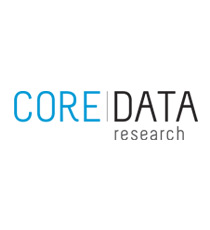The latest life insurance claims and disputes data from APRA appears to throw weight behind the hefty intervention into the disability income insurance (DII) sector late last year.
Statistics for the 12 months to December 2019 show that while the claims admittance rate has remained steady across individual advised and non-advised DII (95 per cent and 85 per cent respectively) year-on-year, the claims payout ratio continues to climb.
The payout ratio, defined as the dollar amounts paid out in the reporting period as a percentage of annual premiums during the period, was highest for income protection among the insurance types during the period, with the exception of Group Ordinary. The ratio was 70 per cent for individual advised DII and 106 per cent for individual non-advised DII, in the year to 31 December 2019, up from 66 per cent and 85 per cent respectively the year prior.
As APRA points out, claims payments are just one part of the costs associated with an insurance policy, and don’t take into account costs such as administration, acquisition costs and claims reserves. However, the high payout ratio implies the total costs of the products exceed premiums paid, which lends weight to the review into the sustainability of income protection following large losses reported by the sector since 2014.
As previously reported by CoreData, with mental health-related DII claims expected to increase as a result of the COVID-19 pandemic, the crisis has intensified the focus on the sustainability of IP cover in its traditional form.
Regardless of the difference in ratio between advised and non-advised policies, even a payout ratio of 70 per cent on individual advised DII is not reflective of a healthy or sustainable sector.
The value of advice
While some may be quick to make the argument that individual non-advised, accounting for direct policies and group salary continuance, have a higher payout ratio and hence demonstrate a superior consumer outcome, the updated data on ASIC’s MoneySmart life insurance claims comparison tool for the period reveals the average claims acceptance rate, based on available data, was 95.1 per cent for DII policies sold through a financial adviser, compared to 84.6 per cent for those sold direct.
Further to this, APRA points out that in general, individual advised business shows higher admittance rates than individual non-advised for the same cover type.
“This could be due to the policyholder having clearer expectations up front of what is covered by the product, or (related to the previous point) the adviser discouraging the policyholder from lodging a claim that is not covered by the policy” APRA says.
This assumption appears to be borne out in the claims decline reasons by cover, which shows 68 per cent of DII claims declined were due to the contractual definition not being met, while a further 18 per cent declined due to an exclusion clause. A good financial adviser would know whether a claim is likely to be accepted by an insurer or not, due to their knowledge and understanding of the policy terms, and hence are less likely to submit a claim that fails to meet the contractual definition or is subject to an exclusion.
ASIC’s MoneySmart data suggests the average claim duration is also lower for advised policies, at 1.4 months compared to 1.9 months for those sold direct.
APRA’s data does not provide a distribution channel breakdown for claims processing duration, with the estimated average duration for DII cover estimated at 1.8 months, behind only TPD (4.9 months) as one of the longest claims durations among cover types.
The longer duration is reflective of the increased complexity of these products, with only two in five DII claims processed within two weeks, while in contrast, 70 per cent of death and 51 per cent of trauma claims are finalised in this timeframe.
During times of stress, such as lodging a life insurance claim, financial advisers play a critical role in supporting people and ensuring they have access to the right information to make the best possible decisions.
We are seeing this flow through in our COVID-19 Pulse Check, which surveys Australians about the impact of the crisis on their financial situation, attitudes, behaviours and overall wellbeing.
Over the last four weeks, we’ve found those who have an adviser are less likely to express that the crisis has had a negative impact on their mental health than unadvised Australians (49.3 per cent vs. 69.3 per cent), or that it’s had a negative impact on their overall wellbeing (44.9 per cent versus 55.1 per cent).
While we can’t prove that the difference in mental health and wellbeing between advised and unadvised Australians is a direct result of their advice relationship, the certainty and peace of mind that this relationship brings is surely having a bearing.
